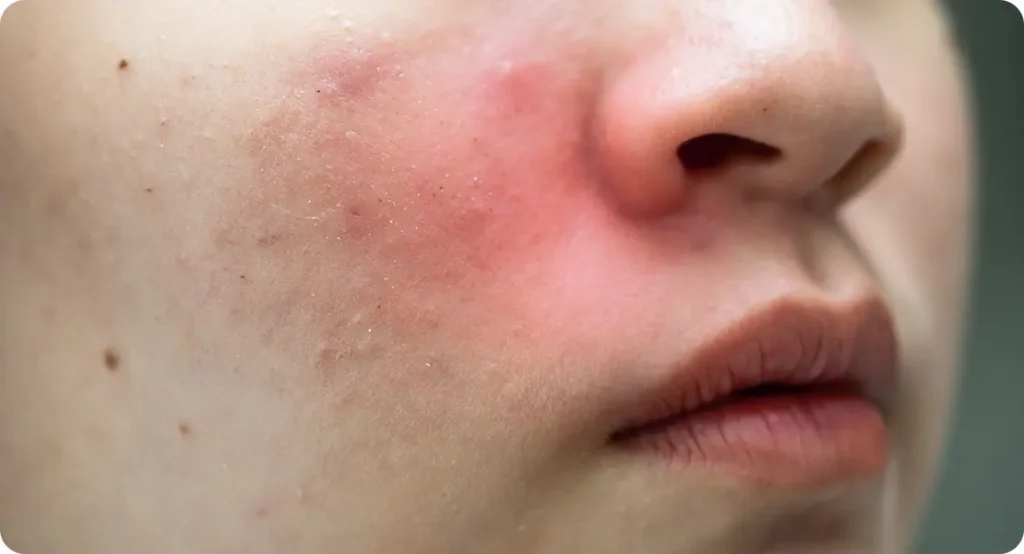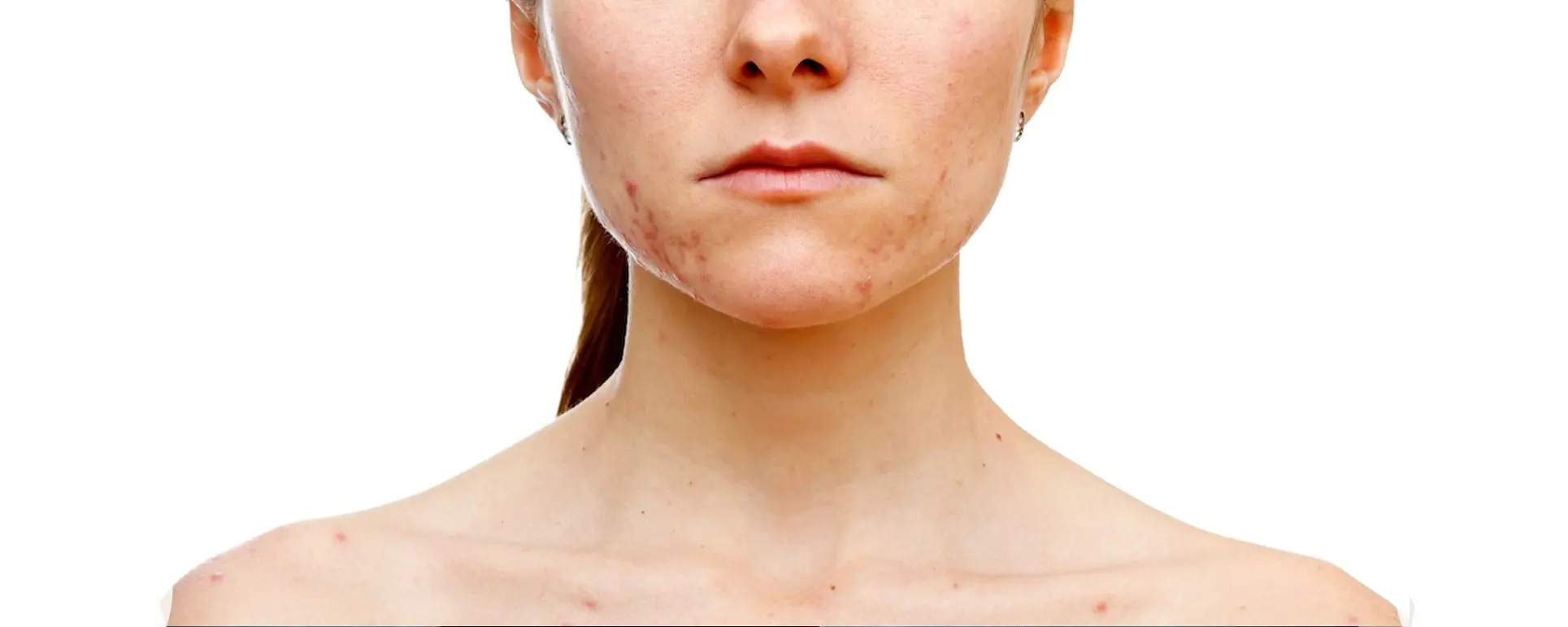Have you ever caught yourself absent-mindedly scratching, rubbing, or picking at your skin only to suddenly notice redness, soreness, or even bleeding? Maybe it starts with a small bump or blemish, and before you know it, you’ve spent minutes focused on that one spot, unable to stop. If that sounds familiar, you’re far from alone. In fact, this behaviour known medically as dermatillomania or Excoriation Disorder affects many people, even though it’s rarely talked about openly.
For many, skin picking becomes a daily habit that seems impossible to control. It might happen when you’re feeling anxious, bored, or stressed or even when you’re completely unaware. And while it may offer temporary relief or a sense of control, the long-term effects can be frustrating and disheartening. It can lead to scarring, infections, and skin damage and emotionally, it can create feelings of guilt, embarrassment, or even shame.
I understand how painful this cycle can be wanting healthy, smooth skin but feeling compelled to do the very thing that prevents healing. It’s a confusing and often isolating experience, especially when others don’t understand why you can’t just “stop.” But here’s something important to remember: skin picking is not simply a bad habit or a lack of willpower. It’s a complex behaviour that’s often linked to deeper emotional or psychological factors and there are ways to manage it.
In this guide, we’ll explore why skin picking happens, how it affects both your skin and your mental wellbeing, and most importantly, the practical steps you can take to begin breaking the cycle. Whether your skin picking is mild or more severe, change is possible. With the right understanding, support, and tools, you can move toward healthier skin and a more compassionate relationship with yourself.
What Is Skin Picking (Dermatillomania)?
Skin picking disorder, also called excoriation disorder or dermatillomania, involves repetitive picking, scratching, or squeezing of the skin. It’s often focused on small blemishes or perceived imperfections, but it can also happen to otherwise healthy skin.
While almost everyone occasionally picks at a spot or scab, dermatillomania goes beyond that. It can become a compulsive behaviour that feels impossible to stop, even when you want to.
In many cases, it’s a way to cope with feelings of anxiety, stress, boredom, or tension. For some people, the action itself is soothing in the moment, despite the guilt or regret that often follows.
How Common Is Skin Picking?
You might be surprised to learn how common this is. Research suggests that up to 1 in 20 people will experience problematic skin picking at some point in their lives. For some, it’s a passing phase linked to stress. For others, it can become a chronic condition requiring professional support.
I’ve spoken with many people who felt they were the only ones dealing with this issue, and just knowing it’s common can be a relief.
Why Do People Pick Their Skin?
There’s no single reason why skin picking happens. For most of us, it’s a combination of psychological, behavioural, and even neurological factors. Understanding what’s driving the behaviour is often the first step toward breaking free from it.
- Emotional Triggers
Stress, anxiety, and tension are some of the most common emotional triggers. Picking can feel like a way to release nervous energy or create a sense of control when life feels overwhelming. It may also serve as a temporary distraction from negative thoughts or uncomfortable emotions. - Habitual Behaviour
Over time, the action can become a deeply ingrained habit. You might not even realise you’re doing it until damage has already happened. Repeated behaviours can create “muscle memory,” making it a near-automatic response in certain environments like sitting at your desk or lying in bed. - Perfectionism and Self-Criticism
Many people with dermatillomania feel compelled to “fix” small imperfections, like bumps or scabs, believing that removing them will make the skin look better. Unfortunately, the opposite usually happens, as the picking leads to irritation, scarring, and a cycle of frustration. This urge to perfect the skin is often tied to deeper feelings of not being “good enough.” - Sensory Processing
For some, the sensation of picking provides a kind of sensory relief or satisfaction that can be hard to replicate elsewhere. The physical sensation may feel soothing or even pleasurable, offering a brief moment of comfort or focus. This is especially common in people who are highly sensitive to touch or textures on their skin. - Coexisting Conditions
Skin picking often occurs alongside conditions like obsessive-compulsive disorder (OCD), body-focused repetitive behaviours (BFRBs), anxiety, or depression. It can act as a coping mechanism for dealing with underlying psychological distress. Addressing these root causes with professional help can make it easier to manage the picking itself.
If any of these sound familiar, it doesn’t mean there’s something wrong with you it simply means you have a pattern that can be understood, supported, and gradually changed. You’re not broken, and you don’t have to go through this alone.
The Effects of Skin Picking on Your Skin

While picking might bring momentary relief or satisfaction, over time it can have quite serious consequences for your skin’s health and appearance. What starts as a seemingly harmless behaviour can lead to long-lasting skin damage and emotional distress especially when the picking becomes frequent or intense.
Here are some of the most common issues:
- Redness and Irritation
Even gentle or occasional picking can inflame the skin and make it more sensitive over time. This irritation weakens the skin barrier, making it more prone to dryness, flaking, and further picking. The redness may persist, especially if the same areas are picked repeatedly. - Open Wounds and Bleeding
Picking at scabs, blemishes, or bumps often causes the skin to break, resulting in painful wounds. These can take days or even weeks to heal especially if the same spot is disturbed again before it’s fully recovered. In some cases, the area may crust over or ooze, which can increase feelings of shame or embarrassment. - Infections
Broken skin creates an easy entry point for bacteria, leading to infections such as folliculitis or impetigo. Infected areas may become swollen, hot, or filled with pus, sometimes requiring antibiotics or medical attention. What began as a small blemish can quickly turn into a more serious skin concern. - Scarring
Repeated picking increases the likelihood of permanent scarring. These scars can be raised (hypertrophic), sunken (atrophic), or discoloured, and may be difficult to treat even with professional skincare. Scars often serve as a painful reminder of the behaviour, which can intensify feelings of guilt. - Hyperpigmentation
Inflammation and injury from picking can lead to dark marks (post-inflammatory hyperpigmentation), particularly in people with medium to dark skin tones. These spots may linger long after the wound has healed and can take months or even years to fade without treatment.
Many people end up feeling stuck in a painful cycle of damage and regret. You might pick because you’re feeling anxious, restless, or upset but then the physical damage increases those very emotions, leading you to pick again. It’s a loop that feels hard to escape, but it is possible to interrupt it with awareness and support.
If this sounds like your experience, I want you to know this: you’re not weak, and you’re not lacking willpower. Skin picking is a recognised condition often connected to deeper emotional or neurological factors and it can be treated with the right strategies and care.
Recognising When It’s a Problem
Not everyone who occasionally picks at their skin has a clinical condition. For some, it’s a mild or situational habit something that happens during periods of stress or boredom, but then fades. However, for others, skin picking becomes a persistent and distressing pattern that’s hard to break on their own.
You may want to consider seeking extra help if any of the following apply:
- Your skin is frequently irritated, sore, or marked by open wounds.
If you’re picking so often that your skin rarely has a chance to heal or is constantly red, scabbed, or bleeding it may be more than just a passing habit. Chronic damage can lead to infections, scarring, and long-term skin health issues. - You feel ashamed, guilty, or emotionally distressed about the behaviour.
People with dermatillomania often feel embarrassed about their skin or try to hide their picking from others. You might avoid social situations, wear long sleeves even in warm weather, or feel overwhelmed by self-blame. - You’ve tried to stop, but can’t seem to control the urge.
Many people attempt to stop picking by sheer willpower but find themselves doing it again anyway, often without even noticing at first. This loss of control is a key sign that professional support could help. - It’s interfering with your daily life, relationships, or self-esteem.
Maybe you’re spending long periods of time picking, avoiding mirrors, cancelling plans, or feeling too self-conscious to go out. When skin picking starts to affect how you live or see yourself, it’s time to take it seriously.
If any of these ring true for you, please know you’re not alone and you’re not failing. Skin picking isn’t just a bad habit. It’s a recognised condition that responds well to the right treatment, tools, and support. Reaching out to a healthcare provider, therapist, or dermatologist can be the first step toward healing, both physically and emotionally.
How to Start Managing Skin Picking
Breaking free from skin picking doesn’t happen overnight. It’s a process of understanding your triggers, changing habits, and learning healthier ways to cope with stress.
Here are some steps you can start with today:
- Notice When You Pick
Try to keep a small journal where you jot down when you pick and what you were feeling or thinking at the time. Over a week or two, you’ll start to see patterns. - Identify Triggers
Are you more likely to pick when you’re stressed, bored, tired, or watching TV? Once you know your triggers, you can work on interrupting them. - Use Substitutes
Keep your hands busy with stress balls, fidget toys, or textured fabrics. If you need to feel something under your fingers, these can provide a safer alternative. - Cover Vulnerable Areas
Using plasters, clothing, or bandages can help create a barrier and remind you not to pick. - Keep Your Skin Moisturised
Dry, flaky skin often makes picking feel more tempting. Use a gentle moisturiser to help soothe irritation. - Be Kind to Yourself
Recovery isn’t about perfection. If you slip up, it doesn’t mean you’ve failed. You’re learning new skills, and that takes time.
Professional Treatments for Skin Picking

If you’ve tried self-help strategies and still find yourself caught in the cycle of skin picking, please know that you’re not out of options and you don’t have to face this alone. Many people benefit greatly from professional support, and the right treatment plan can make a big difference in both your behaviour and your emotional wellbeing.
Here are some treatment options that are commonly recommended:
- Cognitive Behavioural Therapy (CBT)
CBT is considered one of the most effective treatments for dermatillomania. It helps you identify the thought patterns and emotional triggers that lead to picking. With the guidance of a trained therapist, you’ll learn how to reframe those thoughts and respond to stress or anxiety in healthier ways. CBT often includes tools like journaling, mindfulness, and behavioural tracking. - Habit Reversal Training (HRT)
HRT is a specialised form of behavioural therapy that focuses on replacing the skin-picking habit with alternative, non-harmful behaviours. For example, you might learn to clench your fists, fiddle with a stress ball, or apply a soothing lotion whenever the urge strikes. Over time, these replacement actions can weaken the brain’s automatic response to pick. - Medication
In some cases especially when skin picking is linked to anxiety, depression, or obsessive-compulsive disorder (OCD) medications may be helpful. Selective serotonin reuptake inhibitors (SSRIs), a type of antidepressant, are sometimes prescribed to help regulate the underlying emotions and compulsions. Medication isn’t a cure on its own but can be a useful tool alongside therapy. - Dermatological Care
A dermatologist can play a crucial role in your recovery by treating the physical effects of skin picking. They can help manage infections, reduce inflammation, and treat hyperpigmentation or scarring with specialised treatments. Medical-grade skincare may also be recommended to support healing and protect the skin barrier making it less tempting to pick. - Support Groups
Talking to others who are dealing with the same challenges can be incredibly comforting. Whether online or in person, support groups provide a safe space to share your experiences, learn new coping strategies, and realise you’re not alone in this struggle. Peer encouragement can be a powerful motivator on the journey to recovery.
When to See a Dermatologist
If your skin is struggling to heal or you’re dealing with ongoing damage from picking, it may be time to consult a dermatologist. These medical experts specialise in skin health and can offer targeted treatments to help repair the physical effects of skin picking such as wounds, scarring, inflammation, and pigmentation.
Here are some signs that seeing a dermatologist could be helpful:
- Your skin isn’t healing despite careful care.
If you’ve been trying over-the-counter creams or gentle skincare routines but your skin remains sore, raw, or inflamed, it’s time to get professional advice. Persistent wounds or scabs may require medicated treatments or stronger interventions to promote healing. - You suspect an infection.
Pain, increasing redness, swelling, oozing pus, or even fever are signs your skin may be infected. Infections can worsen quickly if untreated and may lead to more serious complications. A dermatologist can prescribe antibiotics or antiseptic treatments to clear the infection and prevent further damage. - Scarring or pigmentation is affecting your confidence.
Visible scarring or dark spots left behind by picking can be distressing and impact your self-esteem. Dermatologists can offer a range of options from chemical peels and laser treatments to prescription creams to help fade marks and improve your skin’s appearance over time.
Remember, dermatological care isn’t just about cosmetic improvement it’s about supporting your skin’s health and protecting it from further harm. When combined with psychological support (like therapy or counselling), dermatology can be a crucial part of your recovery toolkit. Treating both the mind and the skin is often the most effective way to break the cycle for good.
Final Thought: Healing Starts with Understanding and Support
Skin picking can be an exhausting cycle, but you don’t have to face it alone. Understanding why you pick, recognising your triggers, and getting support are all important steps towards healthier skin and better self-esteem.
If you’d like help managing the damage or creating a skincare routine that supports healing, you can get in touch with us to book a consultation with one of our expert dermatologists. We’re here to help you feel more comfortable and confident in your skin.
References:
- Grant, J.E., Odlaug, B.L., Chamberlain, S.R., Keuthen, N.J., Lochner, C. and Stein, D.J., 2012. Skin picking disorder. American Journal of Psychiatry, 169(11), pp.1143–1149. DOI: 10.1176/appi.ajp.2012.12040508. Available PDF via PsychiatryOnline: https://ajp.psychiatryonline.org/doi/pdf/10.1176/appi.ajp.2012.12040508
- Lochner, C., Roos, A. and Stein, D.J., 2017. Excoriation (skin‑picking) disorder: a systematic review of treatment options. Neuropsychiatric Disease and Treatment, 13, pp.1867–1872. Full-text available openly: https://www.dovepress.com/excoriation-skin-picking-disorder-a-systematic-review-of-treatment-opt-peer-reviewed-fulltext-article-NDT
- Snorrason, I., Belleau, E.L. and Woods, D.W., 2012. The Skin Picking Scale–Revised: Factor structure and psychometric properties. Journal of Obsessive‑Compulsive and Related Disorders, 1(2), pp.133–137. PubMed Central access: https://pmc.ncbi.nlm.nih.gov/articles/PMC9180539/
- Flessner, C.A. and Woods, D.W., 2006. Phenomenological characteristics, social problems, and the economic impact associated with chronic skin picking. Behavior Modification, 30(6), pp.944–963. PDF via SagePub: https://journals.sagepub.com/doi/10.1177/0145445506294083
- Tucker, B.T.P., Woods, D.W., Flessner, C.A., Franklin, S.A. and Franklin, M.E., 2011. The Skin Picking Impact Project: phenomenology, interference, and treatment utilization of pathological skin picking in a population‑based sample. Journal of Anxiety Disorders, 25(1), pp.88–95. DOI: 10.1016/j.janxdis.2010.08.007. PDF via PubMed: https://pubmed.ncbi.nlm.nih.gov/20810239/
